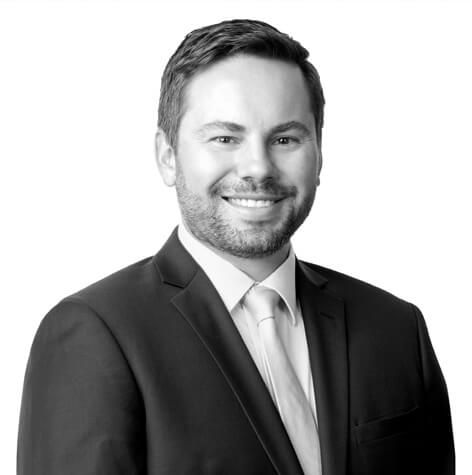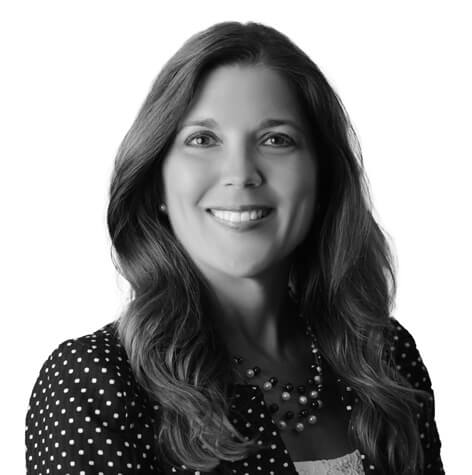In December, the SECURE 2.0 Act of 2022 (“SECURE 2.0”) was passed, a package of retirement provisions providing comprehensive updates and changes to the SECURE Act of 2019. The legislation includes some key changes that affect employer-sponsored defined contribution plans, such as profit-sharing plans, 401(k) plans, 403(b) plans and stock bonus plans. While some of the changes are effective immediately upon the law’s enactment, most required changes are not effective before the plan year beginning on or after January 1, 2024, so employer sponsors have time to prepare for compliance.
Required Changes
Mandatory automatic enrollment in new plans.
Plan sponsors are currently allowed to provide for automatic enrollment and automatic escalation in 401(k) and 403(b) plans. SECURE 2.0 requires new 401(k) and 403(b) plans to automatically enroll participants at a new default rate, and to escalate participants’ deferral rate each year, up to a maximum of 15%, with some exceptions for new and small businesses. This provision applies to new plans with initial plan years beginning after December 31, 2024.
Changes to long-term part-time employee participation requirements.
The Act currently requires 401(k) plans to permit participation in the deferral part of the plan only by an employee who worked at least 500 hours (but less than 1000 hours) per year for three consecutive years. SECURE 2.0 changes this participation requirement by long-term part-time employees working more than 500, but less than 1000, hours per year to two consecutive years instead of three. However, this two-year provision does not take effect until January 1, 2025, which means the original SECURE Act three-year provision still applies for 2024. Employers should start tracking hours for part-time employees to determine whether they will be eligible in 2024 or 2025 under this provision. For vesting purposes, pre-2021 service is disregarded, just as service is disregarded for eligibility purposes. This provision is applicable to 401(k) plans and 403(b) plans that are subject to ERISA and does not apply to collectively bargained plans. This provision applies to plan years beginning after December 31, 2024.
Changes to catch-up contributions limits.
If a defined contribution plan permits participants who have attained age 50 to make catch-up contributions, the catch-up contributions are now required to be made on a Roth basis for participants who earn at least $145,000 (indexed after 2024) or more in the prior year. This provision is effective for taxable years beginning after December 31, 2023.
Changes to the required minimum distribution (RMD) age.
Currently, required minimum distributions must begin at age 72 for participants who have terminated employment. SECURE 2.0 increases the age to age 73 starting on January 1, 2023, and to age 75 starting on January 1, 2033. This means that participants who turn 72 in 2023 are not required to take an RMD for 2023; instead, they will be required to start taking RMDs for calendar year 2024, the year in which they turn 73. This provision is effective for distributions made after December 31, 2022, for individuals who turn 72 after that date.
Changes to automatic enrollment for new plans.
Almost all new defined contribution plans will be required to auto-enroll employees upon hire (existing plans are exempt from this provision). This provision is applicable for plan years beginning on or after January 1, 2025.
Optional Changes
Additional catch-up contribution opportunities.
Currently, the catch-up contribution limits for certain plans are indexed for inflation and apply to employees who have reached the age of 50. SECURE 2.0 increases catch-up contribution limits for individuals aged 60-63 to the greater of: (1) $10,000 (indexed for inflation), or (2) 50% more than the regular catch-up amount in effect for 2024. This provision is effective for plan years beginning on or after January 1, 2025.
Additional employer contributions to SIMPLE IRA plans.
Current law requires employers with SIMPLE IRA plans to make employer contributions to employees of either 2% of compensation or 3% of employee elective deferral contributions. SECURE 2.0 allows employers to make additional contributions to each employee of a SIMPLE plan in a uniform manner, provided the contribution does not exceed the lesser of up to 10 percent of compensation or $5,000 (indexed). This provision is effective for taxable years beginning after December 31, 2023.
Replacing SIMPLE IRA plans with safe harbor 401(k) plans.
The new law also permits an employer to elect to replace a SIMPLE IRA plan with a safe harbor 401(k) plan at any time during the year, provided certain criteria are met. The current law prohibits the replacement of a SIMPLE IRA plan with a 401(k) plan mid-year. This provision also includes a waiver of the two-year rollover limitation in SIMPLE IRAs converting to a 401(k) or 403(b) plan. This change is effective for plan years beginning after December 31, 2023.
Increasing involuntary cash-out threshold.
Currently plans may automatically cash-out a vested participant’s benefit that is between $1,000 and $5,000 and roll this amount over to an IRA. SECURE 2.0 allows plans to increase the $5,000 involuntary cash-out limit amount to $7,000. This provision of the law is effective for distributions made after December 31, 2023.
Relaxation of discretionary amendment deadline.
Under current law, a discretionary plan amendment must be adopted by the end of the plan year in which it is effective. SECURE 2.0 allows plans to make discretionary plan amendments to increase benefits until the employer’s tax filing deadline for the immediately preceding taxable year in which the amendment is effective. This applies to stock bonus, pension, profit-sharing or annuity plans to increase benefits for the preceding plan year. This provision is effective for plan years beginning after December 31, 2023.
Elimination of unnecessary plan notices to unenrolled participants.
SECURE 2.0 eases the administrative burden on plan sponsors by eliminating unnecessary plan notices to unenrolled participants. Under the amended law, plan sponsor notices to unenrolled participants may consist solely of an annual notice of eligibility to participate during the annual enrollment period, as opposed to numerous notices from the plan sponsor. This provision is effective for plan years beginning after December 31, 2022.
Crediting of student loan payments as elective deferrals for purposes of matching contributions.
Under SECURE 2.0, student loan payments may be treated as elective deferrals for the purposes of matching contributions to a retirement plan. This provision is available for plan years beginning on or after January 1, 2024.
Matching contributions designated as Roth contributions.
Previously, employer matching contributions could not be made as Roth contributions. Effective on the date of the enactment of SECURE 2.0, 401(a), 403(b), or governmental 457(b) plans may allow employees the option to designate matching contributions as Roth contributions.
Expansion of the Employee Plans Compliance Resolution System (EPCRS).
Currently, EPCRS contains procedures to self-correct certain limited, operational failures that are insignificant and corrected within a three-year period. SECURE 2.0 expands this, generally permitting any inadvertent failure to be self-corrected under EPCRS within a reasonable period after the failure is identified, without a submission to the IRS, subject to some exceptions. This provision went into effect on the date of enactment.
Recoupment of overpayments.
Currently, fiduciaries for plans that have mistakenly overpaid a participant must take reasonable steps to recoup the overpayment (for example, by collecting it from the participant or employer) to maintain the tax-qualified status of the plan and comply with ERISA. Under SECURE 2.0, 401(a), 403(a), 403(b), and governmental plans (not including 457(b) plans) will not lose tax qualification merely because the plan fails to recover an “inadvertent benefit overpayment” or otherwise amends the plan to permit this increased benefit. In certain cases, the overpayment is also treated as an eligible rollover distribution. This provision became effective upon enactment with certain retroactive relief for prior good faith interpretations of existing guidance.
Simplified plan designs for “starter” 401(k) and 403(b) plans.
Effective for plan years beginning after December 31, 2023, SECURE 2.0 creates two new plan designs for employers who do not sponsor a retirement plan: a “starter 401(k) deferral-only arrangement” and a “safe harbor 403(b) plan.” These plans would generally require that all employees be enrolled in the plan with a deferral rate of three percent to 15 percent of compensation.
Financial incentives for contributions.
SECURE 2.0 allows participants to receive de minimis financial incentives (not paid for with plan assets) for contributing to a 401(k) or 403(b) plan. Previously, plans were prohibited from offering financial incentives (other than matching contributions) to employees for contributing to a plan. This provision became effective for plan years starting after the date of enactment.
Early withdrawal tax exemption for emergency withdrawal expenses.
SECURE 2.0 provides for an exception from the 10% early withdrawal tax on emergency expenses, defined as certain unforeseeable or immediate financial needs, on a limited basis (once per year, up to $1000). Plans may allow an optional three-year payback period, and participants are restricted from taking another emergency withdrawal within three years of any unpaid amount on a previous withdrawal. This provision is effective for plan years beginning on or after January 1, 2024.
When do employers need to amend their plans for the SECURE Act, CARES Act, and SECURE 2.0 (“the Acts”)?
If a retirement plan operates in accordance with the Acts, plan amendments must be made by the end of the 2025 plan year (or 2027 for governmental and collectively bargained plans). (The amendment deadlines for SECURE and CARES were extended late last year.)
Clients are encouraged to call their Varnum contacts with any questions.

